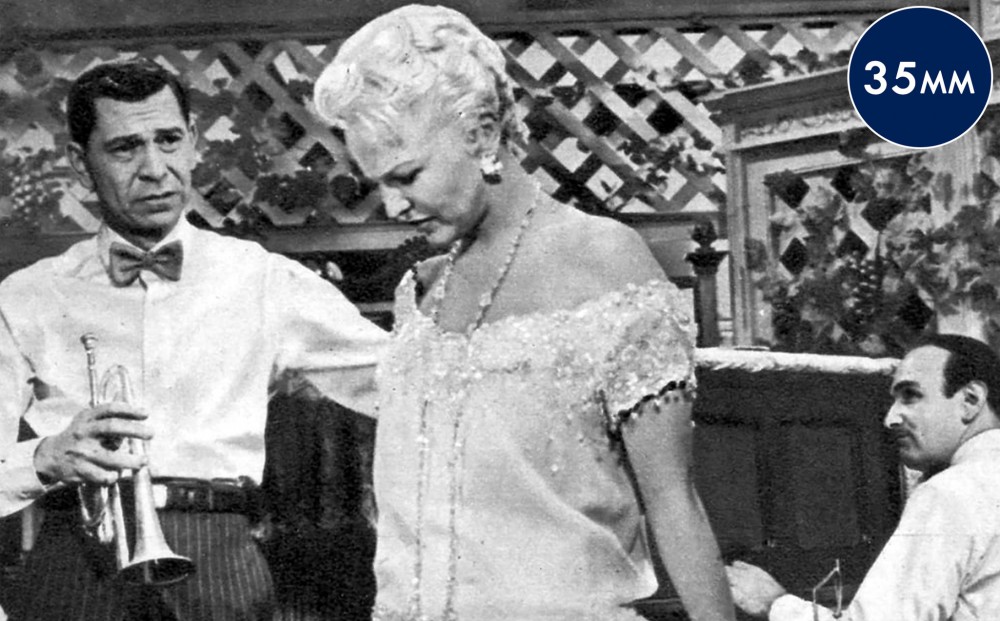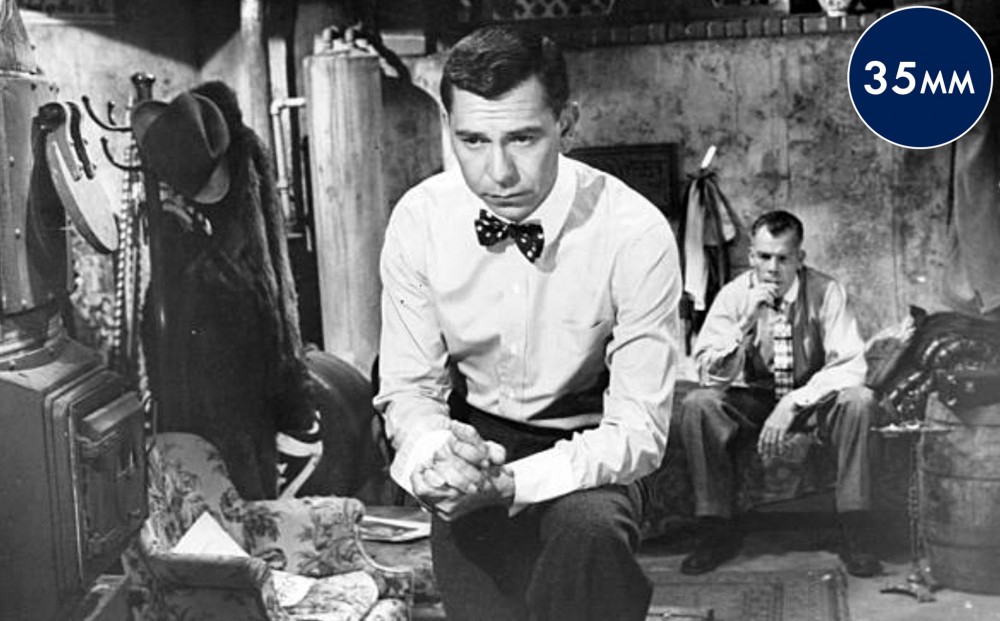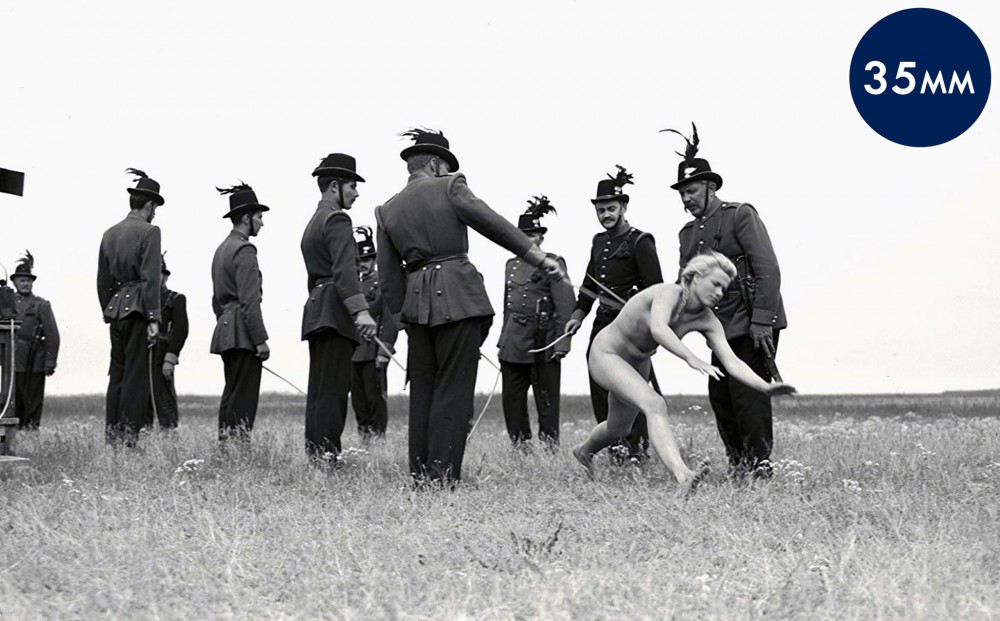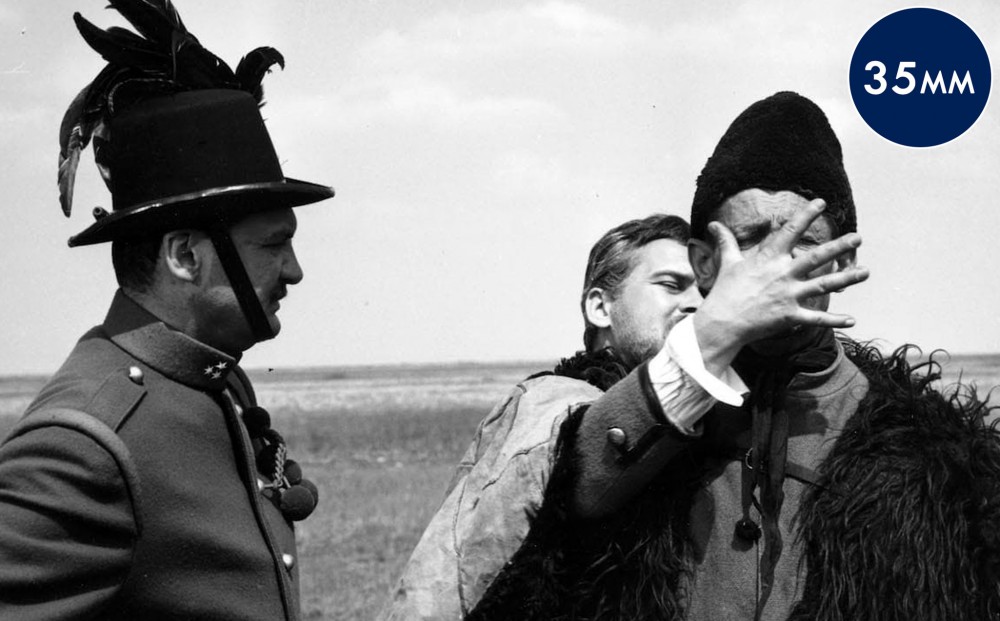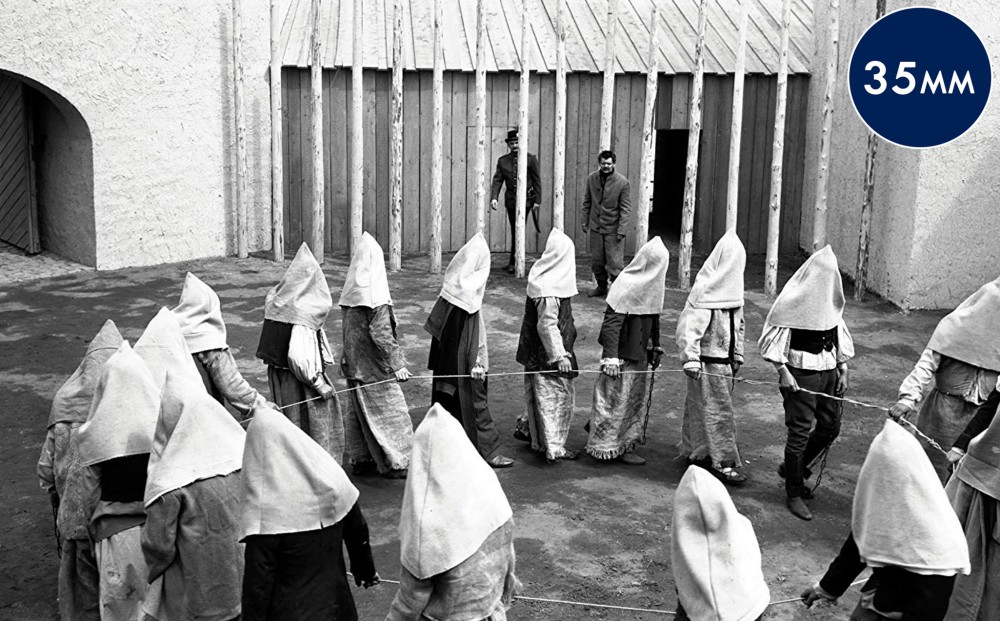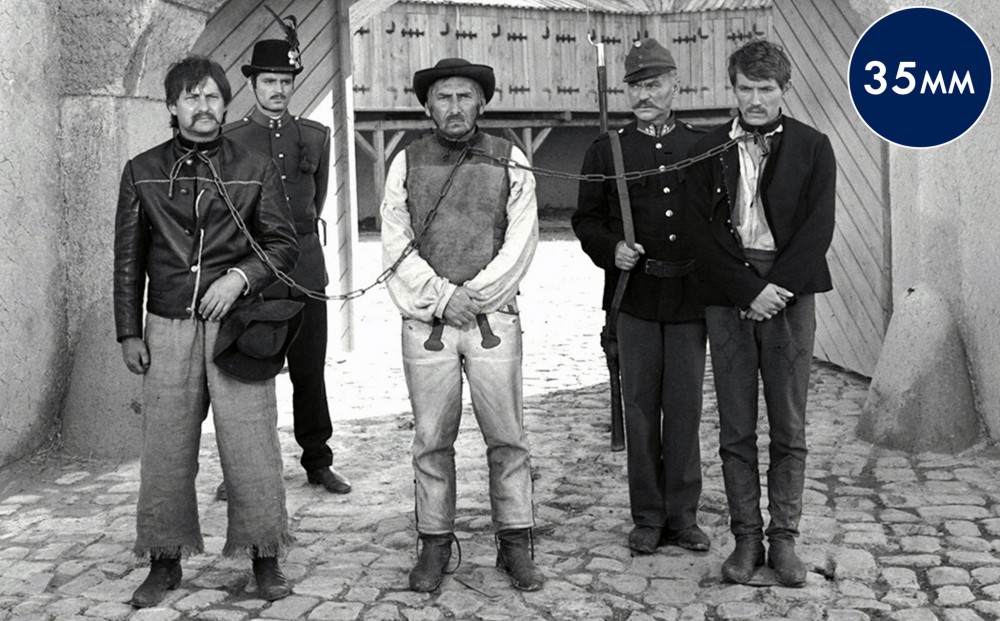PETE KELLY’S BLUES & THE ROUND-UP
Sunday, August 25
PETE KELLY’S BLUES
12:30 Buy Tickets
(1955, Jack Webb) 1927, and as Jack Webb’s Kansas City jazz band (with clarinetist Lee Marvin) gets the bite put on by crime boss Edmond O’Brien, party girl Janet Leigh makes a move on Webb, and he gets stuck with O’Brien’s moll (Oscar-nominated Peggy Lee) as his new vocalist. With Louis Armstrong. 35mm. Approx. 95 min.
“Opens stunningly with a New Orleans jazz funeral which puts the similar sequences in Young Man with a Horn and Imitation of Life to shame both musically and atmospherically.”
– Tom Milne, Time Out (London)
THE ROUND-UP
2:25 Buy Tickets
(1966, Miklós Jancsó) Late 1860s, and in a prison camp on the desolate, windy Hungarian puszta, the guards use torture and trickery to figure which prisoner is the notorious Sandor, one of the last rebels from Louis Kossuth’s 1848 uprising, even digging up a desperate squealer. 35mm. Approx. 90 min.
“A kind of film ballet entering the realms of political drama… The film is so precisely choreographed that the patterns play on the mind until they become clear and obvious in their meanings… No one has tried quite the same thing in the same way, and that is [Janscó’s] most formidable legacy.”
– Derek Malcolm, The Guardian
“A movie of hieratic stylized movement in a Kafka space that is mostly sinister flatness and bald verticals… Jancsó’s fascinating style is based on a taut balance between a harsh, stark imagery and a desolate pessimism.”
– Manny Farber


